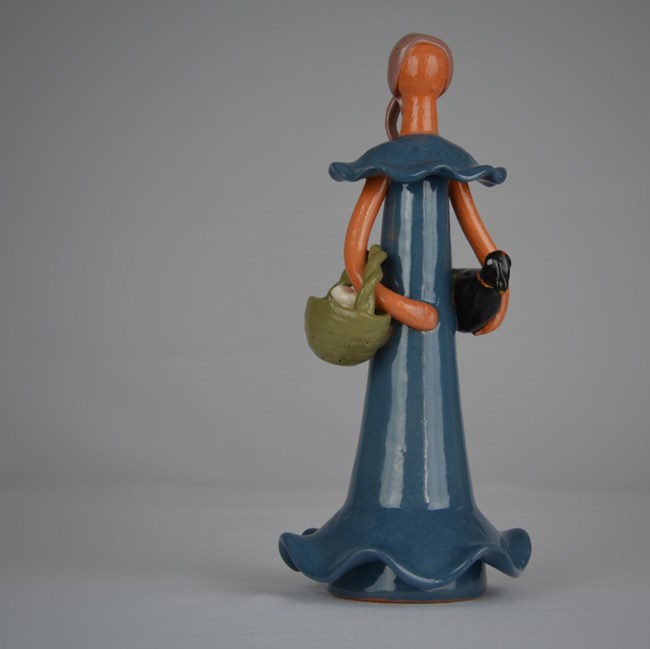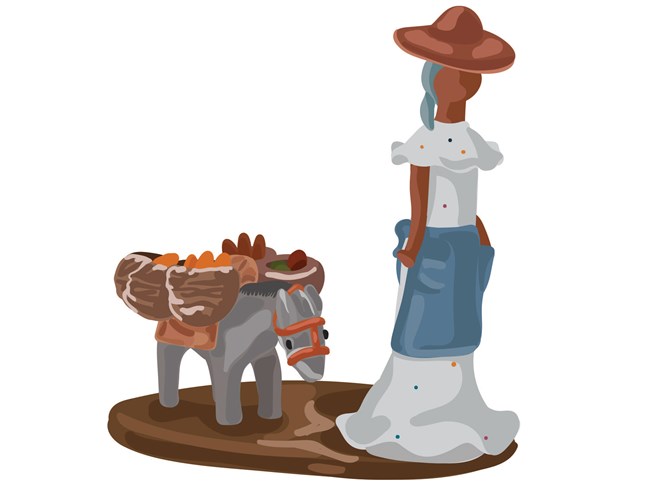Last updated: May 3, 2022
Article
Muñecas Limé: Dominican Faceless Dolls

NPS Photo
Muñecas Limé, also known as Dominican faceless dolls, are a celebrated handicraft of the Dominican Republic and in Dominican homes. Over 40 years ago, in 1981, pottery worker Liliana Mera Limé began sculpting small clay dolls in the town of Moca, located in the Cibao region of the Dominican Republic.
Two challenges faced Limé on the potter’s wheel as she set out to depict the beauty of Dominican women in the small, ceramic figures. First, she lacked the necessary tools to define small facial features. Second, no single face could depict the broad spectrum of Dominican diversity. Her solution gave the dolls their most significant feature. Each ceramic figure was given a smooth surface without facial features. Therefore, Muñecas Limé (Limé dolls) became Dominican faceless dolls.
Limé’s original figures were styled with baskets of fruit, hands holding flowers, colorful hats, and dresses with ruffles. Their simple beauty attracted mass appeal and quickly drew interest in Dominican shops.
Symbols of Womanhood and Diversity

NPS Illustration / Jaqueline Carvalho
Today, Dominican faceless dolls are crafted by numerous artists across the Dominican Republic. Their styles and features have broadened to better encompass diverse Dominican identities.
The dolls have many skin tones and depict the mixed heritage and diversity of Dominican people. They honor African, European, and Indigenous identity.
Dominican faceless dolls reflect the multifaceted roles of Dominican women—roles recognized and unrecognized, celebrated or ignored. They depict Dominican mothers, children, wives, farmers, street-vendors, artists, breadwinners, laborers, and more.
